- Home
- Fishing Jargon
Saltwater Fishing Terms
An A to Z Glossary...
Ever been confused by fishing terms? Can't tell your pirk from your operculum? This glossary sets out to shed a glimmer of light on your darkness.
Angling ~ A term first penned by Isaac Walton (1593-1683) in his book The Compleat Angler, 'angle' being the Olde-English word for 'hook'.
Anal fin ~ Best described, to avoid any risk of offence, as being the fin closest to the tail on the belly of a fish.
Artificial bait ~ In fishing terms, a synthetic bait that looks like, feels like and sometimes smells like the real thing - but isn’t. Read more...
Artificial lures ~ Contraptions designed to imitate something a fish might want to eat, used for spinning, trolling and jigging. Read more...
Backlash ~ A loop of line trapped under successive coils on the spool of a multiplier reel caused by allowing the spool to overrun. See also 'Bird's Nest'.
Bait Ball ~ A densely packed shoal of baitfish just asking to get hit by predators.
Baitcasting ~ Casting a lure with a multiplier reel, as opposed to a spinning (or fixed spool) reel.
Baitcasting reel ~ A small multiplier reel designed specifically for casting lures.
Bait Clip ~ A clip used by surfcasters to secure a baited hook close to the casting weight to prevent the bait flapping around during the cast. It keeps your rig more aerodynamic allowing longer casts and preventing the bait from flying off during the cast.
Baitfish ~ Any fish that is regularly used by anglers as bait for a larger fish. Usual candidates include ballyhoo, sprats, mackerel, herring and flyingfish. And if you consider a squid to be a fish, then squid too.
Bait Well ~ See 'Livewell'.
Beachcasting ~ Unsurprisingly, a fishing term meaning casting a lure, or more often a baited hook, from the beach. See also surfcasting.
Bird ~ A device designed to splash around on the surface ahead of your trolled lure, imitating the disturbance caused by a shoal of baitfish. See also teaser. Read more...
Birds nest ~ A monumental tangle of line on your reel resulting from a spectacular overrun. A fishing term that's often preceded by an expletive.
Bivalves ~ Molluscs that have a two-part hinged shell, such as clams, oysters, mussels and scallops.
Bobber ~ Another name for a fishing float. One of those fishing terms your more likely to hear in the US than the UK.
Bottom fishing ~ A fishing term describing the technique of placing a baited hook on the sea bed, held there by a lead weight.
Brit ~ Not just a statement of nationality, but a general description of small fry destined to be pillaged by bass and mackerel around the UK during the summer months.
Bucktail ~ A jigging lure comprising a metal head and fixed hook, traditionally embellished with hairs from the tail of a buck, but to the delight of deers everywhere, synthetic strands are now used. Read more...
Butt Pad ~ A plastic cup on a waist belt to take the load of the rod butt when playing a large fish. Worn around the front, not as its name might suggest to our American friends, around the back.
Catch and Release Scheme ~ The practice of using equipment least likely to harm fish - eg circle hooks - and releasing them after capture. Billfish caught in this way are normally tagged as part of an international study.
Caudal fin ~ The tail of a fish.
Cephalopod ~ A type of marine creature that sports a set of tentacles, such as squid (calamari), cuttlefish (sepia) or octopus (pulpo).
Charter Boat ~ A sea-angling boat with a skipper that can be hired by several anglers for fishing trips.
Chartplotter ~ An electronic navigation system combining electronic charts and a GPS positioning system.
Chaser ~ The lure at the end of a daisy chain - the one with the hook in it. Read more...
Chum ~ An evil smelling mixture of chopped bait and
fish guts heaved overboard or suspended in a net bag to attract fish to
your baited hook. Also known as 'rubby dubby', especially in the UK.
Ciguatera toxin ~ A toxin sometimes found in reef-associated predatory fish. If eaten, affected fish are poisonous to humans. A serious condition this. At best, extremely inconvenient. At worst, fatal. Read more...
Cocktail ~ A combination of two or more baits on a hook. Lovely!
Continental shelf ~ The area of relatively shallow water surrounding a land mass. The UK has a substantial one, including much of the North Sea, the Irish Sea and the English Channel. OK my French friends, La Manche.
Countdown lures ~ Lures that sink at a predetermined rate, for example 1ft per second. This vital piece of data is normally marked on the lure packaging. All the angler has to do is count the seconds - one thousand and one, one thousand and two etc - from the time the lure hits the water.
Crankbait ~ An American fishing term describing a plug designed specifically for casting, that dives below the surface on the retrieve. To UK anglers, it's just another plug.
Crimps ~ Also known as sleeves or swages, these are used to form connections in heavy mono or multi-strand cable where a knot is impractical. Read more...
Crimper ~ A tool used to compress the crimps described above.
Crustaceans ~ Shrimps, prawns, crabs, lobsters and the like.
Daisy chain ~ A trolling item this, comprising a string of decoy lures, only the end one of which contains a hook, the others acting as teasers. Read more...
Deep-runner ~ a crankbait designed to dive to 10 feet deep or more and run at that depth.
Demersal ~ Fish types that feed on creatures that live on the sea bed.
Depthfinder ~ An electronic instrument for measuring and displaying the depth of water beneath a boat.
Dock ~ An American term for jetty or pontoon, for mooring a boat up to.
Doggie ~ Any member of the dogfish family. Often a fishing term not used in joyful exclamation, as in '**** it, another ******* doggie'!
Downrigger ~ A fishing term describing the cranelike device often seen on the sterns of sport-fishing boats, which lowers a planer on a wire line to a pre-determined depth. Read more...
Drift fishing ~ A fishing term meaning wetting a line when neither at anchor nor underway, just drifting with wind and current. Hey, I live like that.
Dropper ~ A short hook link attached above a weight or lure.
Ebb tide ~ A falling tide.
FAD ~ A Fish Aggregation Device, a floating platform under which fish congregate, used by commercial fisherman.
Fighting Belt ~ A belt worn around the waist that incorporates a plastic cup to hold the butt of a fishing rod, to make the job of fighting an landing a big fish a little less painful on the angler. See also 'Butt Pad'.
Fishfinder ~ An electronic device used to detect fish and display their distribution on a screen.
Fixed-spool reel ~ A reel type primarily intended for casting where the in-line axis spool doesn't rotate and a bale arm winds the line around the spool. One of those fishing terms your more likely to hear in the UK than the US. They tend to call them Spinning Reels.
Flapper ~ A method of preparing a dead baitfish where the fish is filleted on both sides up to the head and the backbone removed. This leaves the fillets attached to the head, allowing them to flap around in the current leaving an intense scent trail.
Flapper Rig ~ A single or multi-hooked bait rig incorporating short hook snoods.
Flattie ~ Any small member of the flatfish family.
Flattie bashin' ~ Fishing for flatfish.
Flood tide ~ A rising tide.
Fluorocarbon line ~ A hi-tech monofilament line that is virtually invisible when submerged. More details...
Fry ~ Young fish, or a cooking method for fish of any age.
Gaff ~ A tool comprising a handle and a sharp hook for boating your catch. Also a word describing the event of poking one through an inflatable fishing dinghy, when a landing net may have been a better choice.
Game fish ~ Any hard-fighting fish that is sought by anglers for sport.
Gastropods ~ Marine snails and slugs.
Gear ratio ~ The relationship between the number of times a reel spool turns for each revolution of the handle.
Gigging ~ The noble art of creeping up on unsuspecting flatfish in shallow water, and stabbing them with a pointed stick. Keeping a low profile is unlikely to be a successful survival strategy for the fish.
Gill ~ The breathing organ of a fish that extracts oxygen from the water.
GPS ~ The Global Positioning System, a satellite navigation system.
Groundbait ~ See 'chum'. One of those fishing terms your more likely to hear in the US than the UK - they use Chum.
Gunwhale ~ Pronounced 'gunnel'. The upper outside edge of a boat's hull along each side. See also 'Transom'.
Handline ~ The simplest rig of all. No rod or reel, just a line with a hook at one end and an angler at the other. Read more...
Handlining ~ Not just using a handline, but also the technique of getting a large fish to the boat when no further line can be wound onto the reel. Serious stuff, this - tough gloves must be worn and great care taken not to get a line wrap around your hand.
Head pin ~ The short length of wire pushed through the head of a baitfish as part of the procedure of rigging it for trolling.
Head spike ~ See head pin.
Hokkai (or hokki) lures ~ A string of small shrimp-like lures on short snoods. Another of those fishing terms your more likely to hear in the US than the UK - they call all rigs of this type 'Sabiki Rigs'.
IGFA ~ The International Game Fishing Association.
Inshore fishing ~ A fishing term generally used to describe fishing that takes place within sight of land.
Invertebrate ~ Any animal that doesn’t have a backbone; a term often found in sentences containing the word 'politician'.
Jellyworm ~ A soft plastic lure designed to imitate a swimming marine worm, often a ragworm. Read more...
Jerkbait ~ A type of lure resembling a bait fish that is typically fished in a series of quick jerks to resemble a darting baitfish.
Jig ~ In fishing terms, an artificial lure designed primarily to be fished vertically in the water column, a method known as jigging. Not to be confused with a drunken sailor's attempt at dancing. Read more...
Jigging ~ Fishing with a jig lure. Read more...
Joey ~ An immature, adolescent mackerel likely to be unruly and rude to its parents.
Lanyard ~ A short length of rope or a strap used to secure an item and prevent its loss.
Leader ~ A length of line to which a hook or lure is attached, of different breaking strain and/or material than the main line.
Leadhead ~ A lure comprising a metal head and fixed hook, to which soft-plastic bodies are attached. Read more...
Ledger ~ A fishing term describing a bottom fishing rig incorporating a sliding weight. Read more...
Line guide ~ Rod rings or rollers through which the line passes.
Livewell ~ Compartment in a boat designed to hold water and keep fish alive. Typically have some device for recirculating water.
Live Bait Well ~ See 'Livewell'.
Main Line (or Mainline) ~ The line that's on your reel, that's tied to your leader.
Mantle ~ The body part of a squid from which the head and tentacles emerge.
Molluscs ~ Invertebrate animals that include clams, mussels, and oysters (bivalves), snails and slugs (gastropods), and cuttlefish, squids, and octopuses (cephalopods).
Monel ~ A pliable and corrosion-resistant wire.
Mono ~ Nylon monofilament line
Monofilament ~ A single, untwisted, synthetic filament.
Multiplier reel ~ A reel type with a transverse-axis spool which relies on internal gearing to increase the spool/handle rotation above 1:1. See also baitcasting reel.
Muppet ~ A soft-plastic imitation squid; or a word sometimes used to describe a person undeserving of your respect. Read more...
Natural bait ~ Live or dead hook bait.
Neap tides ~ The bottom end of tidal ranges, with the smallest difference between daily high and low water marks. Neap tides occur every 28 days, 14 days after spring tides, with a direct correlation to the phase of the moon.
Offshore fishing ~ A fishing term generally used to describe fishing that takes place out of sight of land.
Operculum ~ The gillcover of a fish.
Outrigger ~ A big-game fishing term meaning the long poles mounted either side of a boat to spread trolling lines outboard, and enable the deployment of multiple lures.
Paddle-tail ~ The flat endplate design on a soft-plastic that makes it wriggle.
Paravane ~ A plastic device designed to dive when dragged through the water. Used instead of a weight when trolling, to fish the lure at increased depth. Read more...
Party Boat ~ A large ocean-going vessel equipped to enable a large party of anglers to fish at the same time. Distinct from a 'Charter Boat'.
Paternoster ~ A fishing term describing a rig designed to be fished on or close to the seabed, comprising a lead weight and one or more hook snoods attached to droppers above it. Our father? No idea. Read more...
Pectoral fin ~ The fin usually found on each side of the body immediately aft of the gill cover.
Pelagic ~ The fish of the open ocean, not resident to any specific area or feature.
Pelvic fin ~ The pair of fins on the belly of a fish, between the pectoral fins and the anal fin.
Pennel Rig ~ A two hook rig for long baits like marine worms, and large baits such as whole squid. Read more...
Pirk ~ A heavy chrome-plated jig designed to descend quickly. Often used with great success when fishing over deepwater wrecks.
PFD ~ A Personal Floatation Device that all anglers should wear when there's half a chance they might fall in.
Planer ~ A paravane on steroids, normally fashioned in stainless steel. Read more...
Plug ~ A hard-moulded trolling or casting lure designed to imitate - in appearance and action - a small baitfish. Read more...
Popper, or Surface Popper ~ Topwater plug with a dished-out head designed to make a splash when pulled sharply to imitate a wounded baitfish struggling on the surface.
Predator ~ A fish that preys on other fish.
Prey ~ A fish that would be well advised to stay clear of predators.
Pulley Rig ~ A shore casting rig designed to reduce tackle losses when fishing over rough ground. Read more...
Pulpit ~ In boat fishing terms, this is the rail around the foredeck where it will prevent people - not just preachers - from falling off.
Pushpit ~ See Taff Rail.
Quick-Release (QR) Clip ~ A device designed to initially grip the line, but to release it under a suddenly applied load.
Rig Body Line ~ The main length of line used in your rig, to which the hook snoods are attached.
Roller Guide ~ A type of line guide on a fishing rod which incorporates a roller to reduce friction when under high load.
Rotten Bottom ~ A weak link connecting a sacrificial sinker that will break when you get hung up, thus minimising the loss to your tackle. Not just a fishing term, but also a condition associated with a good night in the pub, particularly when followed by a hot curry.
Sabikis ~ A string of small lures on individual snoods used to catch baitfish.
Sand spike ~ A rod holder pushed deep into the sand to support a surf rod or beachcasting rod vertically.
Seamounts ~ A seamount is a mountain rising from the ocean floor that doesn't reach the water's surface. Sort of an island that didn't quite make it...
Secondary Port ~ any port which is not a Standard Port, but for which tidal data can be derived by reference to a Standard Port.
Shad ~ A small soft-plastic fish-shaped lure. Read more...
Sink-and-draw ~ A fishing term describing a technique used in lure fishing where the rod is slowly raised during retrieval, then lowered, giving the lure the appearance of a dying fish - or at least one in a spot of bother.
Sinker ~ A lead weight used to sink a line down deeper.
SINK ~ Not the inevitable consequence of inversion and immersion, but an acronym for a design of fishing kayak - a Sit IN Kayak.
SOT ~ The other type of fishing kayak - the Sit On Top.
Skirted lure ~ A trolling lure designed to imitate a squid or octopus. Read more...
Slack water ~ The period at top or bottom of the tide when the tidal stream has no strength or direction.
Sleeves ~ See crimps. Read more...
Snap Link ~ A swivel with a clip attached used for securing other rig components such as casting weights.
Snelled Hook ~ A hook with the line tied around its shank rather than to its eye. Read more...
Snood ~ A short hook link. See also dropper.
Snubber ~ A shock-absorber incorporated in a trolling handline.
Spinner ~ A small rotating metal lure. Read more...
Spinnerbait ~ An artificial bait consisting of a leadhead and one or two rotating blades, and a shaft dressed with a skirt.
Spinning ~ Casting a lure with a spinning (or fixed spool) reel , as opposed to a multiplier (or baitcasting) reel.
Spinning reel ~ See fixed-spool reel.
Split shot ~ Small weights squeezed onto the line, used with light float tackle.
Spoon ~ A metal lure designed to wobble and flutter, rather than rotate like a spinner. Read more...
Sportfishing Boat ~ A type of fast fishing boat of 24ft (8m) or more designed for offshore fishing.
Spreader bar ~ An array of soft-plastic or skirted lures attached to a metal bar, designed as a decoy imitating a small shoal of fish. Read more...
Spring tides ~ The top end of tidal ranges, with the greatest difference between daily high and low water marks. Spring tides occur every 28 days, 14 days after neap tides, with a direct correlation to the phase of the moon
Standard Port ~ Any one of a number of ports around the coast for which tidal data is published.
Standing part ~ A knot-tying term, referring to the part of the line that remains above the knot.
Stinger ~ A secondary hook, intended to catch short-striking fish that doesn't understand the rules of the game. Read more...
Stromboid toxin ~ A form of poisoning caused by eating fish that has started to 'go off'.
Surfcasting ~ An alternative fishing term to beach casting.
Swages ~ See 'Crimps'.
Swim Bladder ~ An internal organ in a fish that enables it to stay put at its chosen depth.
Swimming lures ~ Sinking plugs designed to resemble a swimming baitfish. Such plugs vibrate or wobble during retrieve, some having built-in rattles. Also called lipless crankbaits.
Swimbaits ~ Soft-plastic lures, normally sporting a 'paddle' tail. Read more...
Swivel ~ A small metal rotating device incorporated in your fishing rig to allow any line twists to unwind.
Tackle ~ The all-inclusive fishing term to describe the equipment that goes to make up a fishing outfit.
Taff Rail ~ The rail around the stern of any boat, not just Welsh ones, also referred to as the pushpit.
Tag end ~ A knot-tying term, meaning the short length of line remaining after tying the knot which is snipped off.
Teaser ~ Any device designed to attract fish to your lure, and induce them to strike.
Terminal Tackle ~ The business end of your rig, with the lure or hooks on.
Tidal Range ~ The difference in height between Low Water and the next High Water. At its maximum at the top of spring tides and its minimum at bottom of neap tides. Read more...
Topwater lures ~ Floating hard baits or plugs that create surface disturbance during the retrieve, typically mimicking a wounded baitfish.
Trace ~ The length of line to which a hook is tied.
Transom ~ The upper outside edge of a boat's hull across the stern. See also 'Gunwhale'.
Trolling ~ Dragging a lure (or several of them) astern when underway. Read more...
Trolling ball ~ A spherical lead weight for getting your trolling line down deeper, normally used as part of a downrigger set-up.
Up-and-down rig ~ A fishing term describing any rig intended for deployment vertically in the water plane.
Waypoint ~ A GPS position marked on an electronic chart, often as a planned course change on a route, or as an event marker.
Wishbone Rig ~ A two-hook bait rig for bottom fishing.
Working End ~ The part of the line that is being used to tie a knot
Yo-Yo ~ A circular plastic line holder, often used for handlines.
Zander ~ A freshwater fish with no right to be in this glossary of saltwater fishing terms at all, other than to mark its end.
Recent Articles
-
Sea Fishing Rods and Reels Must Be Compatible for a Balanced Outfit
Mar 08, 21 08:30 AM
A quality reel fitted to a quality rod doesn't necessarily make it a quality outfit. Your fishing rods and reels have to be properly matched if you're to get the best out of them, and here’s how -
Essential Lure Fishing Tips That All Saltwater Anglers Should Know
Mar 08, 21 04:51 AM
Which single lure fishing tip applies to trolling, jigging, baitcasting, spinning, fly fishing and any other branch of lure fishing? Well, it is the one at the top of this list -
Vital Jig Fishing Tips That You Really Cannot Afford To Miss!
Mar 07, 21 10:20 AM
Essential jig fishing tips to help you select the right lure for successful jig fishing, together with the techniques required to get the most out of your jig fishing outfit
















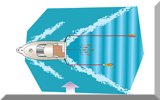

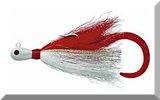
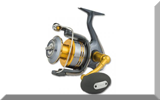
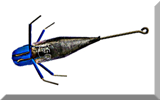
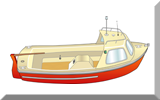
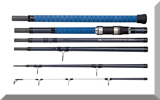
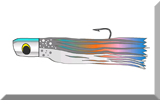
New! Comments
Have your say about what you've just read! Leave me a comment in the box below.